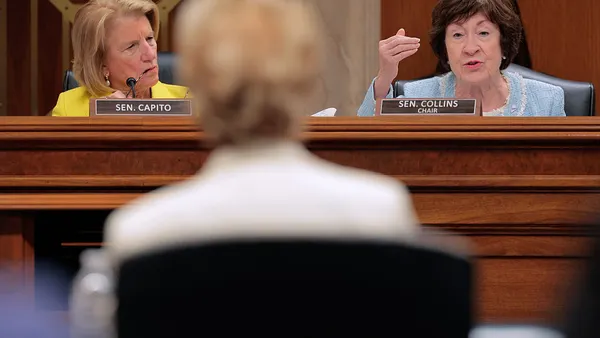Dive Brief:
-
Several states misdocumented portions of their federal pandemic aid spending, according to the first three state audits of the Governor's Emergency Education Relief, or GEER, programs released by the U.S. Department of Education's Office of Inspector General.
-
These three audits come as the OIG has begun releasing its findings on how states have spent and tracked federal pandemic relief money from the Elementary and Secondary School Emergency Relief and GEER programs.
-
The three states — Michigan, Oklahoma and Missouri — said in their responses to the audits that they worked quickly to distribute emergency funds. The oversights could be a result of understaffing and a big workload on states, rather than intentional misuse or misdocumentation of the funds, said Jess Gartner, an education finance consultant who follows federal aid issues.
Dive Insight:
The OIG last week completed an audit of Michigan's use of GEER funds, the third in a series after audits of Oklahoma and Missouri, in which it found Michigan failed to properly track $5.4 million of the $89.4 million it received in GEER.
"OIG has been charged with ensuring that pandemic relief aid funds are used as required and reach the intended recipients, and with investigating misuse, theft, and other criminal activity involving these funds," said an OIG spokesperson in an email.
The Michigan audit found the state properly spent and tracked $84 million on two of seven programs to support districts most significantly impacted by the pandemic.
However, Michigan could not confirm that the other five programs “were deemed essential for carrying out emergency educational services, providing childcare and early childhood education, providing social and emotional support, or protecting education-related jobs,” according to the audit.
"As a result, Michigan lacks assurance that its awards to four entities" that administered the five programs "aligned with the purpose of the GEER grant fund," the audit reads.
OIG also found the Michigan Department of Education did not have a written plan to monitor its GEER grant subgrantees.
Gartner, however, said, "Administrative understaffing often looks like negligence from the outside, but the absence of robust documentation doesn't always indicate wrongdoing." Rather, "it might just mean that a very overburdened staff is triaging their time to focus on the highest value/necessary activities," she said.
In the state's response to the OIG findings, a Michigan education official agreed there were problems. Kyle Guerrant, the Michigan Department of Education's deputy superintendent of finance and operations, said the state agreed it did not implement a thorough GEER monitoring process for some of its recipients. Guerrant also said "some aspects of the process were not as well documented as they could have been."
Gartner thinks this could be a staff and workload issue, which can be improved by using technology and automation to administrators' advantage.
In July, the OIG released an audit of Oklahoma that found the state misdocumented a much larger portion of its funds — totaling $31 million of the state’s $39.9 million GEER grant — than Michigan had. In that case, the OIG was only able to confirm that $8 million of Oklahoma's $39.9 million GEER grant was used to support districts most impacted by COVID-19.
"Like every other state, Oklahoma faces challenges associated with the coronavirus and the unprecedented global health crisis to which it gave rise," Steven Harpe, state chief operating officer, said in a response to its audit. Harpe added that "the crisis burdened every government agency with unexpected tasks."
Missouri's audit showed the state ensured its three GEER-funded initiatives overall submitted the correct documentation, but some program implementation and recipient monitoring could have been strengthened.
A report released last year by the Education Law Center suggested the federal government needs to play a more active role in state K-12 funding systems to ensure more fair and equitable spending across the nation. It found only Wyoming received an A across three “fairness measures” for funding districts, while other states received mixed results.
OIG said it currently does not have plans to conduct additional audits in this series of GEER funds. "We do have other pandemic relief aid work underway," an Inspector General spokesperson said. The agency is in the process of ESSER audits, with selected districts' use of funds for technology being inspected.
The tracking and documentation of federal aid relief funds has been controversial — some advocates have said it increases the burden on district administrators, while lawmakers have said it's a necessary tool to ensure funds are being spent equitably.
Gartner suspects these federal aid audits will be the first of many. "There has been so much pre-scrutiny around it already, this tracks to me, and I suspect we'll see more of it," Gartner said.














